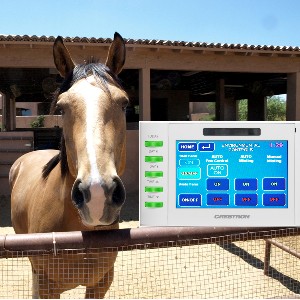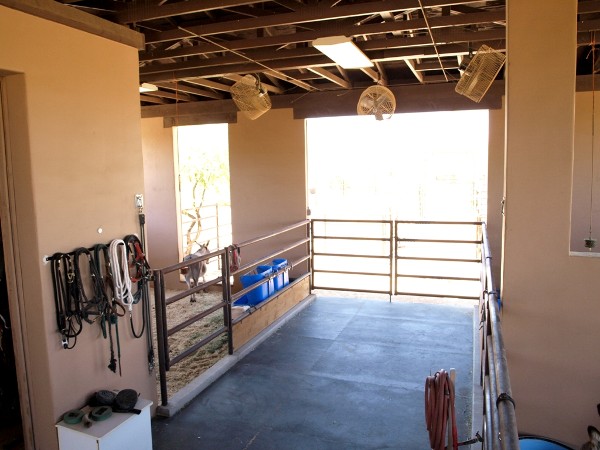Automation system manages misters, fans and dispensing of fly repellent.
Click here to view the full article

August 09, 2011 by Lisa Montgomery
When the flies are biting and the mercury is boiling, it’s no fun for a horse. To keep his animals healthy and content the owner of this stable in Arizona contacted HomeSmart Inc., Scottsdale, Ariz., to install a Crestron automation system. “He was already using a Creston system to manage the lights, thermostats and A/V gear in his home, so it made sense to use the same type of system for the barn,” says Jim Brunen, HomeSmart. In fact, it made so much sense that Brunen tied the home and barn systems together so that the owners can, for example, turn on and off the lights in the barn from any keypad or touchpanel in the house. And should a car pull into the driveway, the owners can see the image (captured by a surveillance camera) on the screen on a TV that’s in the barn just as they would on a TV in the house.
Remote control over lights and surveillance cameras are fairly typical applications of a Crestron system. What’s a bit out of the ordinary is the way the system keeps the heat and flies at bay in the barn. Seven fans—one aimed at each stall and at each end of the barn—kick in automatically when the temperature of the barn reaches above 80 degrees. If it’s above 85 and the humidity level is lower than 40 percent, the fans stay off and a misting system emits a fine spray of water over each of the barn’s stalls. “Misting can lower the temperature by as much as 20 degrees,” says Brunen, “but they only work if it’s not humid.”
Flies are another common problem in barns. The Crestron system controls a pump that dispenses fly repellent into the barn from a 55-gallon drum. A fine mist sprays from emitters over each stall automatically every hour for between 60 and 90 seconds. Just before the pump is scheduled to spray, the fans turn off so that the repellent isn’t sucked out of the barn. After the spray has settled—which takes about five minutes—the fans kick back on.


Click here to view the full article
